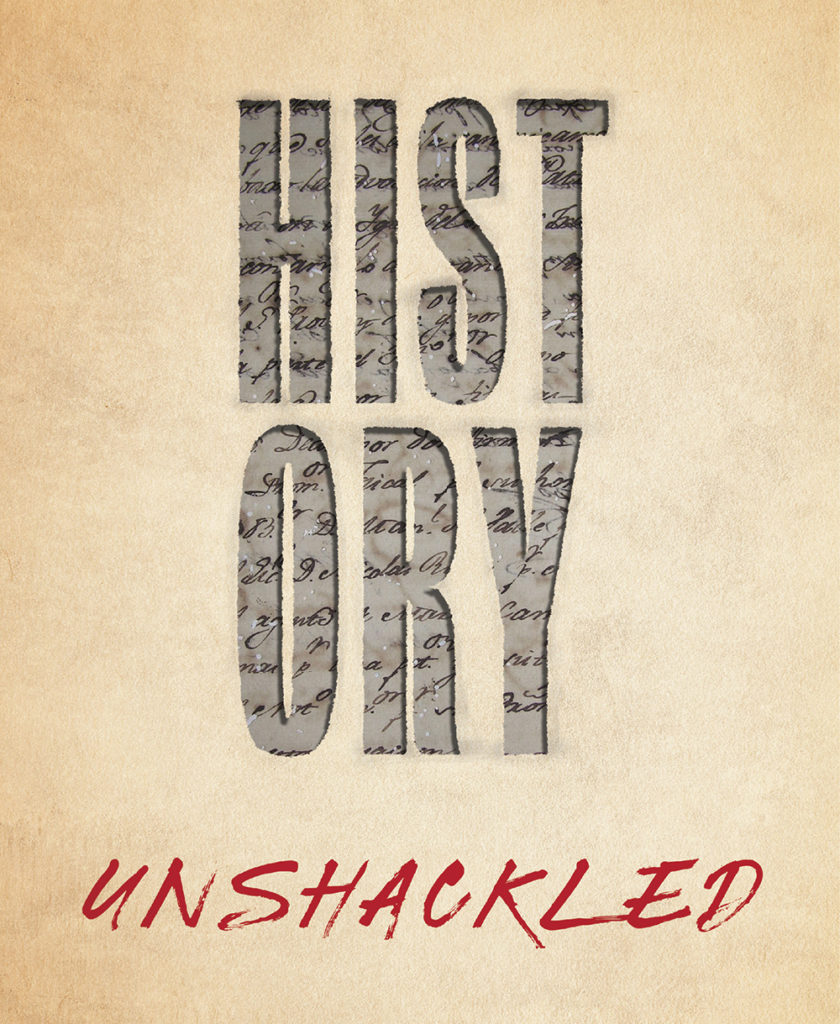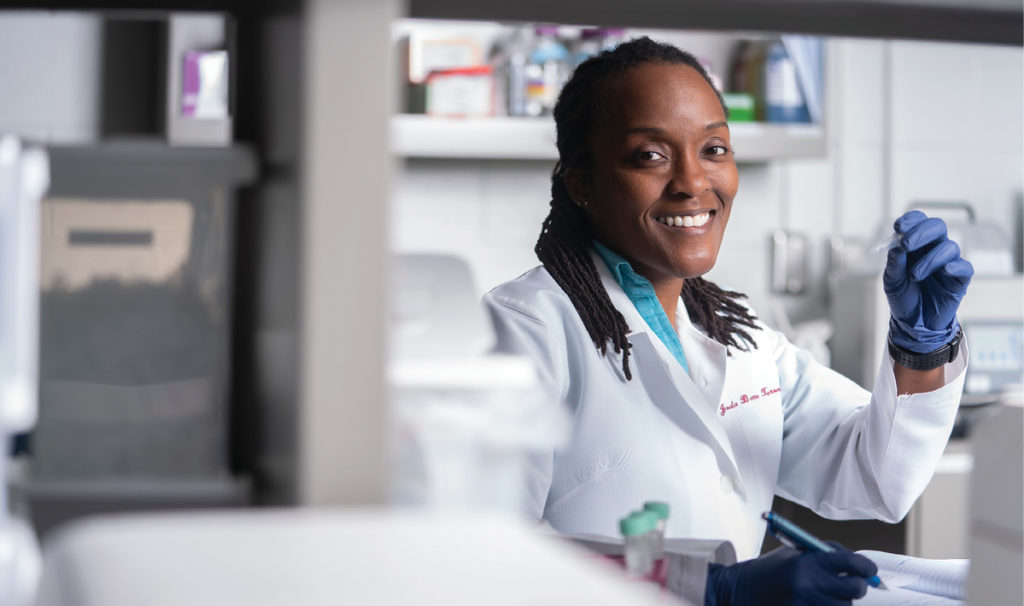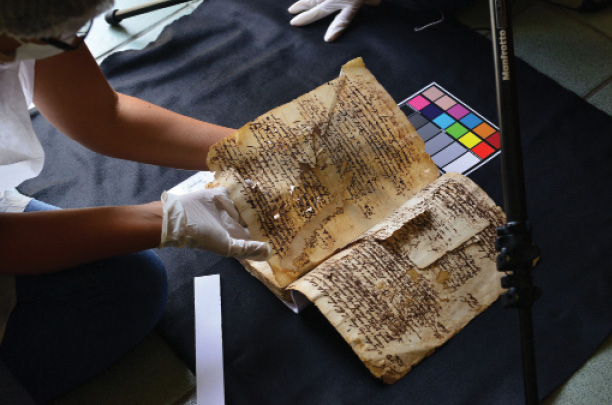By Rebecca Beyer and Seth Robertson

In the early 16th century, just a few years after Christopher Columbus first made landfall in the Caribbean, Spanish colonists began bringing Africans to Jamaica to serve as slaves for their expanding empire. Some escaped, running away to the mountainous interior of the island to form their own free communities. Over generations, these communities fought for their independence until eventually signing peace treaties in the 1700s with the British, who by then had driven the Spanish off the island.
In 2011, more than five centuries after those formerly enslaved Africans, known as Maroons, escaped to the interior, Associate Professor of Anthropology Jada Benn Torres used DNA testing to trace their lineage to adults living today in Accompong Town on the western side of the island.
Benn Torres’ research, published in the American Journal of Human Biology and Canadian Journal of Latin American and Caribbean Studies, was conducted in full collaboration with the Maroon community. In addition to their African heritage, Jamaican Maroons claim to have been descended from the indigenous Taíno population on the island despite popular and scholarly arguments that the Taínos couldn’t have survived the brutal European conquest. Beyond answering questions about ethnogenesis—that is, how a particular ethnic group forms and develops—the research carried modern-day implications as well. Maroons have long sought greater autonomy within Jamaica, and official recognition as an indigenous group would be a significant step in that direction.
During the course of the study, Benn Torres and her team did, in fact, find genetic evidence of both African and indigenous ancestry, possibly from Taínos, among the subjects who participated. While the specific Taíno question requires further investigation, the research nonetheless adds a compelling chapter not just to the story of the Maroons but to the history of the African slave trade as a whole—a chapter that helps dispel the common misperception that slaves were simply powerless or passive victims.
“This gives some agency to the people who were enslaved and brought to the Americas,” Benn Torres says. “Despite the risks they took, they were able to establish their own communities. Those arguments have been made before, but not by geneticists.”
Benn Torres isn’t the only researcher at Vanderbilt whose work helps bring the larger story of these slaves and their descendants to life. She is joined by a team of faculty across a range of disciplines, from anthropology and history to Latin American studies and literature, who are filling in the gaps of our knowledge about the African diaspora and bringing a fresh perspective to its present-day consequences.

A BROADER CONTEXT
“So many people point to 1619 as the beginning of African American history, when 20 slaves got off a boat in Jamestown,” says Jane Landers, Gertrude Conaway Vanderbilt Professor of History. “But, in 1513, the first African—a free explorer—set foot in Florida. African history in the Americas goes all the way back to Columbus. Free people came on explorations, and they lived to tell the tale.”
Uncovering little-known historical details like this about Africans and their descendants in the Americas is at the heart of Landers’ research. For decades she and her students—some of whom have gone on to write award-winning books about early African history—have scoured the Caribbean and South America for records that can shed light on their everyday lives. Some of these records, like bills of sale, property registries and disputes, dowries, and letters of manumission that document their release from slavery, come from municipal and provincial archives. But the Catholic Church holds by far the oldest and largest repository of information, including records of confirmations, baptisms, petitions to wed, wills and even annulments.
The fact that many of these records date back to the earliest days of the Spanish empire adds a sense of urgency to the work that Landers and her colleagues do. Often the documents are fragile and in danger of disappearing altogether, having been stored in less-than-optimal conditions for centuries.
“When searching for and preserving archives, our researchers must race against time,” explains Landers in a recent piece she wrote for The Conversation. “These fast-vanishing records are threatened daily by tropical humidity, hurricanes, political instability and neglect.”

In 2003, Landers launched Vanderbilt’s Slave Societies Digital Archive, which is dedicated to identifying, cataloging and digitally preserving these endangered archival materials. The SSDA, which she continues to direct today, is the world’s most extensive source for information about Africans in the Atlantic. Hosted at the Jean and Alexander Heard Libraries, the holdings include a searchable database of close to 500,000 digital images drawn from more than 2,000 unique volumes that document the lives of an estimated 4 million to 6 million individuals. The database offers a wealth of information, not just for academic and government researchers but also for individuals looking to piece together their own fragmented family histories. The baptismal records alone, says Landers, “are the oldest and most uniform serial data available for African American history.”
Although Landers and Benn Torres work in different mediums—Landers with historical documents, Benn Torres with DNA—their efforts are complementary in many respects. Ultimately, the two share a common goal: documenting the movement and lives of free, enslaved and formerly enslaved Africans.
“In cases where the paper trail goes, the genetic data can present new ideas,” Benn Torres says. “And when there are no records—in some of these communities, there simply aren’t any—genetic data can provide some idea of the experiences of these communities.”
According to Tiffany Ruby Patterson, associate professor of African American and diaspora studies, a “transdisciplinary approach” is absolutely necessary to the study of the African diaspora.
“You can’t work on the slave trade from one disciplinary perspective,” says Patterson, who has written about Maroon societies as part of her book Zora Neale Hurston and a History of Southern Life (2005, Temple University Press) and teaches a course on the African slave trade. “All the work that people at Vanderbilt do helps add to our understanding of the entire historical period in which human bodies were being transported across the ocean and beyond.”
Patterson, Benn Torres and Landers are all part of the Black Atlantic, a focus area at the Vanderbilt Center for Latin American Studies that brings together faculty who research and teach about the African diaspora in Latin America and the Caribbean. The Black Atlantic frequently provides opportunities for K–12 teachers and the wider Nashville community to engage with the faculty on these topics, including through its annual Haiti Week, which Patterson helps lead.
While DNA research has added an exciting dimension to the work of the Black Atlantic, the professors are careful not to extrapolate too much from genetic data. Genetics should be examined in a broader context, they say, pointing to recent controversies over the use of DNA in discussions about race, including the news earlier this year that James D. Watson, the Nobel laureate and co-discoverer with Francis Crick of the structure of DNA, stands by his past—and erroneous—claims that differences in average measured IQ between blacks and whites can be explained by genetics. That revelation and other examples demonstrate the need for careful consideration of cultural, environmental and historical factors in any and all discussions about race, says Benn Torres, who receives research support from the REAM Foundation.
“If you erect these differences between groups and say they’re natural and innate and insurmountable, there will be no motivation at all for social or cultural change,” she says. “These genes don’t exist in a vacuum. If we focus solely on genetics, we won’t do the hard work of ensuring social justice and creating policies that are attentive to the needs of everyone.”
WHERE PAST MEETS PRESENT
In 2016, Vanderbilt established the Genetic Anthropology and Bio-Cultural Studies Lab and named Benn Torres its first director. Since 2018 the lab has been housed in the Stevenson Center. It comprises two separate facilities: a modern DNA laboratory and an ancient DNA laboratory. To date, Benn Torres’ work has focused primarily on modern DNA, but in collaboration with Associate Professor of Anthropology Tiffiny Tung, she has begun working on ancient DNA samples as well.
The Genetic Anthropology and Bio-Cultural Studies Lab allows Benn Torres and her students to examine the genetics of living individuals and older genetic material obtained from bioarchaeological contexts, such as bone, teeth and hair. Given the limited quantity and fragility of the DNA from these ancient remains, additional precautions are taken to avoid contamination within the lab, including an ISO 7 cleanroom, ultraviolet C lights in the ceiling and HEPA air filters.
“These genes don’t exist in a vacuum. If we focus solely on genetics, we won’t do the hard work of ensuring social justice and creating policies that are attentive to the needs of everyone.”
Outside the lab, Benn Torres says “the intellectual capital” at the university was a major selling point when she decided to join the faculty in 2016. Already she’s collaborated with Vanderbilt colleagues as part of a working group on genetic ancestry led by Melinda C. Aldrich, assistant professor of thoracic surgery, biomedical informatics and medicine. She and Aldrich have a new paper under review in the American Journal of Physical Anthropology that explores the impact of colonization on the genetic variation of indigenous communities on St. Vincent and Trinidad.
That paper builds on a 2015 study that Benn Torres worked on for the National Geographic Society’s Genographic Project, a genetic anthropological initiative that aimed to map historical human migration patterns by collecting and analyzing DNA samples. She was recruited to the project based on her dissertation work on the effects of the slave trade on genetic diversity in the anglophone Caribbean. In addition to her primary graduate advisers, Benn Torres worked on that research with Rick Kittles, a leading geneticist and scientific director of African Ancestry, a direct-to-consumer genetic testing company that traces lineages of African descent.
Benn Torres also spoke, at Landers’ invitation, at “History and the African Diaspora of Latin America,” a 2017 Berea College panel discussion organized by Brendan Weaver, PhD’15, as part of the Mellon Partners for Humanities Education program. Weaver, who was the first person to archaeologically study the African diaspora in Peru as part of his dissertation on slaves owned by the Society of Jesus during the country’s colonial period, is now a postdoctoral research fellow at Stanford University.
“Vanderbilt is an epicenter” for the study of the African slave trade and Afro-Latin history, says Miriam Erickson, PhD’15, an academic coordinator at Vanderbilt who joined Benn Torres and Landers on the panel and completed her dissertation on black militias fighting for Haiti’s independence from France. “We’re putting together some really groundbreaking discoveries. It takes us a long time to get those to the general population, but if you’re an undergraduate student at Vanderbilt, you can get in on the ground floor of this really easily.”

Although their work shines new light on slavery, Benn Torres, Landers and Patterson aren’t just concerned with the past. Their research also has real implications for the present. Landers serves on a UNESCO International Scientific Committee on slave routes that may result in permanent preservation of several sites in the United States, including Fort Negley in Nashville. Patterson incorporates modern literature, including the novels of Jamaican author Marlon James, in her course work. And Benn Torres has written about how genetics might affect Caribbean countries’ claims for reparations from former colonizers.
“What I hope students begin to do is to dispose of the myths about who we are as a people,” says Patterson, who is currently working on another book about Hurston in Haiti. “I try to complicate our understanding of the past, to show that it was not one thing; it was many things.”
Whenever possible, Benn Torres returns to communities where she’s gathered data to discuss the results of her research. The responses can be moving, she says, with some people expressing gratitude that their DNA validates what they had heard in oral histories or traditional songs or from their grandparents or older relatives. Other times, people are surprised to learn that their ancestry isn’t what they thought it was.
“In those cases, I talk about the limitations of ancestry tests,” Benn Torres says. “No buccal swab or spit test is going to tell you who you are. Identity is so much more complex than any particular genotype.”
Rebecca Beyer is a freelance writer and editor based in New York City. Seth Robertson is executive editor of Vanderbilt Magazine.